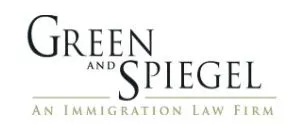Since the Senate passed its version of a comprehensive immigration reform bill in June 2013, the status of the law itself has not changed. The changes to the field of immigration law that have occurred have been the product of executive order and policy directives. Even without new legislation, however, the impact of immigration law on the practice of labor and employment law has never been as significant as it is today.
Enhanced immigration regulatory compliance activities and an ever-increasing number of private causes of action make it impossible to ignore this complementary practice area. This year, the Section's Immigration Committee convened a roundtable discussion at the mid-winter meeting of the Employment Rights and Responsibilities Committee in anticipation of a time in the not-so-distant future when immigration compliance problems and immigration-related lawsuits will be as common to employment practitioners as wrongful termination claims.
Sean Hanagan, from Jackson Lewis in White Plains, New York, noted that immigration worksite enforcement is at an all-time high under the Obama administration. Immigration and Customs Enforcement (ICE), the principal investigative arm of the Department of Homeland Security (DHS), is on track to conduct about 3,000 employer audits in 2014 for I-9 employment eligibility verification compliance. During the four-year period from 2009 through 2012, ICE imposed approximately $31 million in civil fines related to I-9 audits. In fiscal year 2012 alone, the audits resulted in over 200 arrest warrants for company managers.
This increased focus on I-9 audits represents a significant change from the Bush administration years, when ICE's primary enforcement mechanism was workplace raids focused on the employees and their status, rather than audits directed at ascertaining employers' efforts to comply with document review and retention requirements of the law. From 2003 to 2008, ICE only issued $1.5 million in civil fines to employers.
It is apparent that the current administration is seeking to promote greater consistency among its ICE investigators and to increase compliance by the levying of higher fines where violations are found. In February 2014, the DHS's Assistant Inspector General for Audits, Mark Bell, said that "inconsistent implementation of the administrative inspection process, plus the reduction of fines, may have hindered its [ICE's] mission to prevent or deter employers from violating immigration laws." As a result, it is expected not only that the rate of audits will continue through this year but that the size of the fines assessed on employers will continue to increase.
Hanagan also noted that in July 2013, the U.S. Department of Justice announced that its Civil Rights Division's Office of Special Counsel for Immigration-Related Unfair Employment Practices (OSC) entered into a memorandum of understanding (MOU) with the National Labor Relations Board (NLRB) allowing the two government agencies to share data and conduct multiagency investigations, as well as to refer potential violations to each other. The MOU contains a cross-training component so that, for example, NLRB agents will be better able to identify I-9 violations including requests that employees produce specific documents at the time they are hired, a request that could constitute evidence of discrimination based on citizenship status or national origin.
The Immigration Committee roundtable participants discussed possible strategies and best practices for employers in the face of this increased federal scrutiny. These included creating stronger company policies and procedures pertaining to the I-9 process and the need for internal audits by counsel. The suggestion that management counsel offer immigration risk management as a service to their clients, just as they do with harassment training, was received with interest.
Orin Kurtz, from Gardy & Notis in New York City, discussed trends in private sector litigation in immigration law, with a particular focus on class actions. The most notable recent case, Koehler v. Infosys (E.D. Wis. 2013), concerns an American worker seeking class certification in an action against the outsourcing firm Infosys. The plaintiff alleges the company engaged in systematic, company-wide national origin discrimination in violation of Title VII by favoring applicants of South Asian descent. According to the complaint, about 90 percent of Infosys's 15,000 U.S. employees are of South Asian descent.
The plaintiff in Koehler, a network engineer with a master's degree in information systems, alleged that she was fully qualified for the position offered at Infosys but was summarily dismissed as not qualified by a panel of Infosys interviewers on grounds irrelevant to the job for which she applied. After the case was filed last summer, other plaintiffs with similar stories came forward and were added as named plaintiffs.
Infosys is a known heavy user of the H-1B program, as well as the Department of Labor's PERM Labor Certification Process (PERM), which is a step towards permanent resident status. Kurtz suggested that the "interview" referenced in the complaint might have been part of a PERM process, which required Infosys to test the labor market in order to assert that there were no minimally qualified U.S. workers available for the job.
The panelists and attendees discussed whether the activities a company undertakes to make its threshold showing in the PERM agency process could be used to support or further enhance a Title VII claim. Koehler remains pending, and the claims asserted are illustrative of the overlap between immigration and employment discrimination issues and the direction in which future litigation may evolve.
Originally published in Labor and Employment Law, Volume 42, Number 3, Spring 2014. © 2014 by the American Bar Association.
The content of this article is intended to provide a general guide to the subject matter. Specialist advice should be sought about your specific circumstances.


